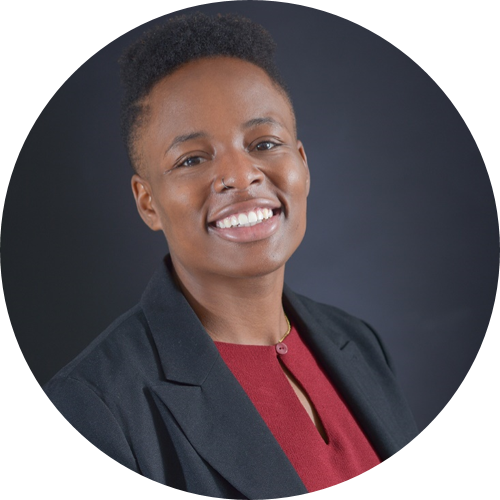Education First envisions a world in which income and race no longer determine the quality of one’s education. Yet we know that combating persistent and prevalent inequities in our education system requires individual, organizational and systemic change. We are addressing this through our Race, Inclusion, Diversity and Equity (RIDE) agenda.
At our last all staff retreat we honed in on developing individual mindsets with the objective of having deep and meaningful conversations about the confluence of race and gender. We split into four identity groups—men of color, white women, white men and women of color—and each group had a discussion while the other three watched. Each group responded to the same prompt: “What do you want people to know about your identity group?”
The goal of this was to encourage a more critical discourse on race and gender in education that works to dismantle—not perpetuate—inequities and prejudicial conditions. We used the Discourse I/Discourse II framework developed by Eugene Eubanks, Ralph Parish, and Dianne Smith as our guide.
What follows are the individual reflections of Kathleen Callahan, a white woman, and Kiera Vinson, a woman of color, about this activity.
How did you feel when you were in the fishbowl?
Kathleen: Unexpected dread washed over me as I heard the white women group called up to the fish bowl. The overwhelming sense of awkwardness and silence struck me as ironic and counter-intuitive for two reasons. First, I am always with groups of white women—friends, family, coworkers—you name it. Why on earth would I be feeling awkward now? Second, white women, at least in my circle, love bonding over the struggles and inequities associated with being a woman. Why on earth would we be silent now? “If only the topic was women, not white women, then I’d have lot to say,” I thought to myself.
Kiera: I have never been in a professional setting where I have been able to look around and see women that look like me or have had racialized experiences similar to mine. I honestly felt a bit of a weight lifted off my shoulders because I felt seen and heard, even when other women of color spoke. I was also reminded that working in a virtual organization creates an additional challenge when you work in silos and do not see most people regularly. So for 10 minutes I felt deeply connected, and even empowered, by some women I barely interact with merely because we were given the physical space to come together and share some thoughts.
What did you find most challenging about talking about race?
Kathleen: I find it difficult to speak up and have an opinion when talking about race if people of color are present during the conversation. I typically revert to two types of behavior. Sometimes I remain silent, justifying my silence by stating, “I am letting the people of color speak”. I’ve noticed this is common among white people. It makes us feel really good. In other circumstances I redirect the conversation to be about gender, promoting the “I’m a woman, I can relate” type of attitude.
This fishbowl, however, forced us white women to discuss the interplay between race and gender. This is something white progressive women, myself included, have failed to unpack throughout history. We see ourselves as oppressed rather than oppressors. We talk about feminism as if all women, regardless of color, feel the same. Our fishbowl group seemed at a loss for words.
Kiera: I find it challenging to truly express how I am feeling without making my white counterparts and colleagues feel uncomfortable. I do not like the thought of making people feel uncomfortable by just talking about the daily ins and outs of being a black woman. Moreover, if I talk about my daily experiences and feel pity from others because they say, “That’s unfair,” or “I can’t believe that,” I shut down. When I sense that people are not at ease when I express my true and authentic self, I stop expressing myself. The fishbowl reminded me that I talk about race in my day-to-day life because I often talk about the challenges I experience with other people with similar lived experiences or with people that have seen me navigate these experiences. The ease comes from knowing I will feel somewhat validated and heard.
What do you need to do to overcome this challenge?
Kathleen: If I stay silent or pivot to talking about gender during race-related conversations, I put 100% of the burden to speak up on people of color. Inevitably, this promotes a culture in which people of color must “teach” white people. While this is comfortable for me, it is unfair and inequitable. To move past these types of interactions, I must actively listen and engage. I haven’t been able to do this previously because rather than responding or asking questions, I’ve been preoccupied with how others might perceive me. I’m too busy thinking about reactions to what I might say that I end up either not saying anything at all or saying something very agreeable. Moving forward, I want to worry less about what others think. This means asking questions when I don’t understand, probing when someone shares life experiences different from my own and respectfully pushing back when I don’t agree. It also means I need to be OK feeling uncomfortable and OK with people calling me out on my own biases. Their push back and this type of honest discourse is what will allow myself and my colleagues to grow.
Kiera: To overcome this challenge, I will need to remind myself of the weightlessness I felt after the fishbowl. It seemed as though my white coworkers took on some of my daily burden by just listening to how I even go about navigating this said burden. I would like to take advantage of this time/space with my coworkers to have more conversations like this. This looks like initiating virtual one-on-one conversations with colleagues I do not interact with frequently or opting into all of our firm wide connections calls, which serve as spaces to discuss topics of interest monthly with anyone that is interested. At the end of the day, our organization’s mission hinges on serving students of color, and we cannot truly do that unless we engage with these issues in an authentic way.
I also believe that relationships matter for these conversations. It is much easier for me to talk about my lived experiences with someone—like Kathleen—who has a vested interest in me as a person and my development. I will actively work to build deeper relationships with my colleagues.
How do we continue conversations about race beyond the fishbowl?
Kiera and Kathleen: There does not seem to be some panacea for discourse about race. However, we can start by using our general discomfort about race to push past both of our inclinations to be silent. This could involve challenging ourselves and our peers to keep race at the forefront of our client-focused conversations, and spending the time to build relationships with colleagues in order to talk about the nuances of our own racial identities in our lives. Whatever the case, we must be active participants in these conversations. This active participation requires honesty, vulnerability and belief in the value of our own based in our identities. The idea is that if we can share and understand our experiences on an individual level, we can then push for true organizational and systemic change in order to serve all students.


